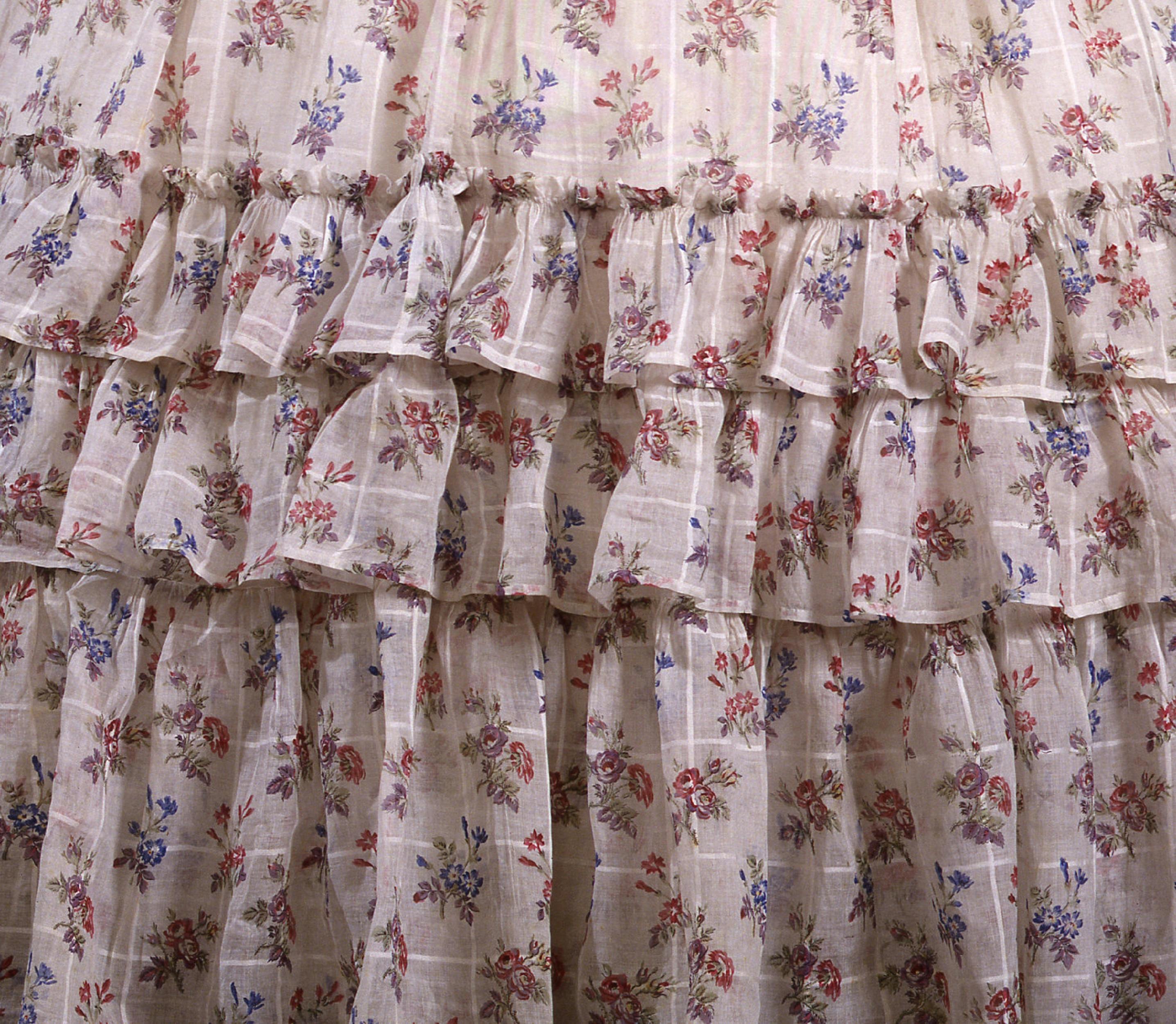Day dress
Italian production (?)
Between the fourth and fifth decades of the 19th century, petticoats and crinoline structures allowed for a considerable increase in the width of dresses. The use of large amounts of fabric, ruffles and overlapping skirts gave the female silhouette of this period the appearance of a large upturned flower whose waist, squeezed into the bust, gave the image of a slender stem.
The dress on display, made from a light fabric, presents delicate ruffles in the bust area, which animate the surface near the neckline, on the shoulders, and around the waist. The flared sleeves are criss-crossed by several showy ruffles, while a double ruffled flounce runs along the hems.
The dark red taffeta of the belt creates a significant contrast between the tightness of the bust and the volume of the skirt, which is embellished by three rows of ruffled flounces recalling those of the sleeves. The surface of the fabric is enlivened with dandyish bouquets of flowers on a plaid background.
The commercial success of textiles such as cotton and linen, together with the development of industrial cloth-printing techniques, favoured the introduction of lighter and cooler clothes for the summer season, while also providing cheaper alternatives to valuable textiles such as silk. Light fabrics and light colours were generally considered more suitable for young people. Relatively simple and light dresses like the one on display formed part of a woman's wardrobe required for specific occasions of the day and the year, such as walks and trips to the favourite destinations of the 19th century bourgeoisie: holiday homes in the countryside, in the mountains, as well as spa and seaside resorts.
La Galleria del Costume/4 , Centro di, Firenze, 1990, pp. 16-17; S. Ricci, Le ore della moda: il codice borghese delle buone maniere , in La Galleria del Costume/5 , Centro di, Firenze, 1993, pp. 17, 20.
